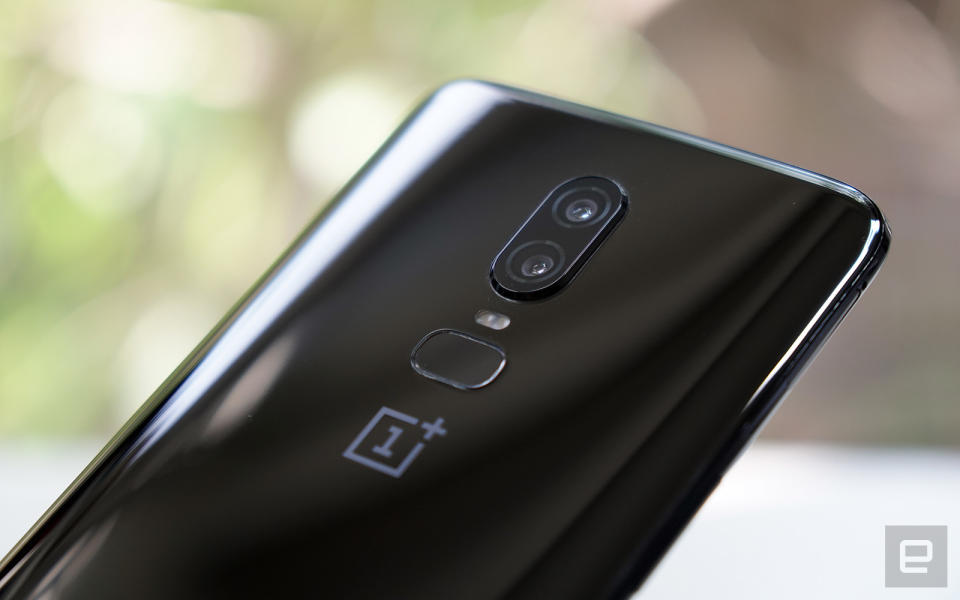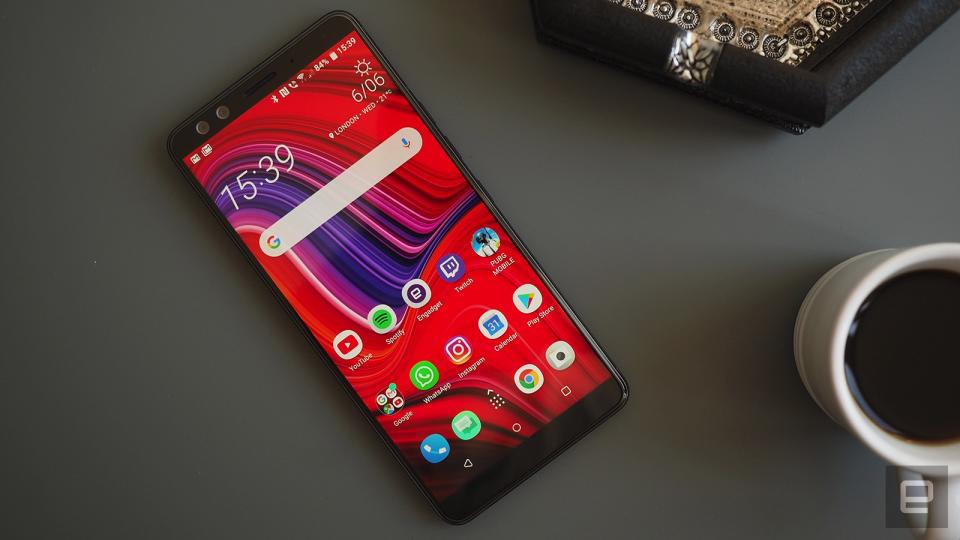HTC U12+ review: Fundamentally flawed
The phone's pressure-sensitive power and volume keys are kinda the worst.
Once a big player in smartphones, HTC is now better known for its Vive VR headsets than anything else. The firm offloaded the team responsible for the Pixel phones to Google earlier this year, shortly before the chief of its smartphone division resigned. Another round of layoffs later, as HTC merged its VR and phone arms together in North America, and you'd think it was kissing the industry goodbye. But according to the company, that's far from the case, though we imagine there'll be a keen eye on the success of the new U12+, the HTC flagship of this year. With plenty of top-tier competition recently unleashed on the public, though, can HTC still hold its own? HTC's U11+ never made it to the US, but considering it launched elsewhere in December last year, it's no surprise you're looking at a very similar handset in the U12+. The most obvious visual difference between the two is you now get two camera lenses instead of one, both on the front and back of the device. Otherwise, the design hasn't really come on leaps in six months. HTC has stuck with a mostly glass build, a metal border sandwiched between a flat pane on the front and curved sheet on the back. It's a solidly put-together device with a luxurious feel familiar to phones like the glass-lavished Galaxy S9, Xperia XZ2 and Nokia 8 Sirocco, to name a few. You also get IP68-rated waterproofing, which you'd expect from 2018 flagship but important for peace of mind nonetheless. Wireless charging, however, isn't featured, but then again that's still not a given in high-end devices quite yet. There's nothing truly standout about the design, per se, but HTC has considered the overall finish. The translucent back pane on the black variant has a lovely, almost mirror-like sheen to it, and there's an arguably trendier blue number with added transparency that reveals some of the phone's internal components. A vibrant red model is due out later this year, too, if flashy is more your style. One thing you need to know: Like the U11+, the U12+ is a big phone and relatively heavy, too, at 188g (around 6.6 ounces) -- roughly the same as the Galaxy S9+, 14g heavier than the iPhone X, but 10g lighter than the Xperia XZ2. HTC has managed to shave 1mm off the width, making the six-inch display near edge-to-edge on either side, and shed nearly 2mm off the height, though there's still a fair slice of pixel-free space above and below the screen. I have relatively big, spindly hands, and I struggle to use the thing with just one wrapped around it. I don't care how many accommodations you make in the software to improve ease of use, this is a two-hander through and through. Oh, and make sure your belt's tightened because you can definitely feel the weight of U12+ pulling at your jeans pocket. The benefit of a big phone is you get a nice large display to work with. Nothing's changed from the U11+ here, as you're getting the same 18:9, six-inch Super LCD 6 display with HDR 10 support and Quad HD+ resolution (2,880 x 1,440). Colors pop with intensity, and blacks are among the deepest I've seen on an LCD screen (AMOLED tech still leads in that particular regard). The display isn't so powerful as to completely eliminate glare from a direct sunlight attack, but overall it's a pretty one. Combine that with HTC's BoomSound stereo speakers and you've got a media machine on your hands. Typically I loathe using smartphone loudspeakers for anything but hands-free calls, but watching YouTube videos or Twitch streams on the U12+ is perfectly enjoyable. There are distinct theater and music modes you can switch between that prioritize higher notes and bass tones, respectively. I still wouldn't listen to, say, a whole album through the speakers -- bass is lacking and the higher end of the spectrum can be a tad raspy -- but audio clarity is much better than the general smartphone standard. Included in the box is a pair of HTC's USonic earbuds, with USB-C plug in. There's no 3.5mm port I'm afraid, and you won't find a 3.5mm convertor in the box à la the U11+ (and most other phones that've ditched the traditional jack). USonic isn't new tech, but as a quick recap, the headphones scan the inside of your ear and create an audio profile specific to you. Pair that with active noise cancellation and the end result is a great audio experience. Turn these features off and on again, and you can definitely hear the hardware and software working together to get the best definition and balance out of whatever you're listening to. With the U11 and U11+, HTC introduced a brand-new feature called Edge Sense. Thanks to the pressure-sensitive sides of the two phones, you could give it a quick squeeze to perform one action, or a longer one to do something different. Now, on the U12+, you get Edge Sense 2, which adds a double-tap into the mix to give you three distinct triggers. There's a number of possible actions you can assign to each gesture: launch the camera or any other app, play/pause music, summon Google's Assistant or Amazon's Alexa, take a screenshot or turn the flashlight on and off. Another option is to bring up the Edge Launcher, which is a little side-mounted dial of shortcuts to apps, contacts and settings that make the phone slightly easier to deal with one-handed. Beyond the stock list, you can create your own catalog of app-specific actions. Some apps have a prepared list available (squeeze to zoom in on Google Maps or take a picture in Instagram, for example), but you can also make a gesture correspond to a single or double tap anywhere on screen, in any app. There's a new smart rotation function that's part of Edge Sense 2. If the phone recognizes you're holding it, the screen won't automatically change orientation if it shifts position. What this basically means is when you're playing with your phone in bed, the display won't twist unwantedly into landscape mode, so you can keep reading that article as if you were sitting upright. Furthermore, the phone will ignore the screen timeout setting and keep it lit no matter how inactive you are. The problem here is when you're using your phone, you're generally holding it. So if you do want the display to rotate, you have to make a concerted effort to release pressure on the sides and put your hands elsewhere. I don't really see the point. Sure, the smart rotate feature doesn't change the display orientation when you don't want it to, but it also locks it in place when you do. If Edge Sense 2 sounds a bit gimmicky, I wouldn't entirely agree. Sure, I used it often to quick-boot the camera app when I was roaming around taking sample pictures for this review, but the concept is not particularly well-executed. For starters, the U12+ is a large phone, so squeezing its hard metal sides is, well, uncomfortable. I also find myself triggering actions unintentionally, making the feature occasionally more frustrating than helpful. Up until I disabled gesture detection when the screen is off, I also initiated actions every time I put the thing in my pocket. Long story short, it's not as user-friendly as it might sound on paper. For some ungodly reason, HTC also decided to make the volume and power keys pressure-sensitive knobs instead of physical buttons, with a quick buzz providing the haptic feedback that tells you you've pressed one. These are pretty awful. Sometimes you get no reaction out of them, despite pressing so hard your thumb hurts. Other times, you don't even have to go near them and suddenly you're locked out, or the music volume jumps up to earsplitting levels. It's hard to exaggerate just how frustrating this can be on a day-to-day basis. HTC actually sent me a replacement review unit because of all the problems I was having with pressure sensitivity. The first device was from the very first manufacturing batch, I'm told, and it's taken the production line time to settle in. This second phone is marginally more predictable, but the same random events continue to arise. The company is well aware of issues with pressure sensitivity, and has promised a software update shortly after launch to improve functionality. But the fact there's inconsistencies between the two review units leads me to believe the hardware behind these features is just fundamentally flawed. HTC pioneered the use of dual camera arrays to manipulate depth of field back in 2014 with the One (M8). Almost as soon as other manufacturers began to follow suit, though, the company abandoned the feature it popularized. But dual cameras make a comeback on the U12+, and what's more, you now get two on the front and the back (because four lenses is the new thing, apparently). Using a similar setup to HTC's mid-range U11 Eyes, the U12+ has two eight-megapixel sensors up front, which let you control background blur (aka bokeh) in your selfies. But this feature softens the foreground, too, smoothing out facial blemishes much like a beautification mode would. Several phones with single front-facing cameras that use software to add depth of field, like the Huawei Mate 10 Pro and Google Pixel 2, produce better, more natural results. The same can be said of Instagram's Focus feature, which works on all devices, as well as the iPhone X, which uses an infrared depth sensor to help generate realistic bokeh. What's more, if you ignore the bokeh mode on the U12+ and just snap a regular selfie, the photo comes out paler, lacking appropriate color saturation. Even with Snapchat-esque AR filters and various beautification modes to play with, this phone probably won't impress selfie addicts. The main camera arrangement comprises one 16-megapixel telephoto and one 12-megapixel wide-angle lens. These allow you to take close-ups and adjust the background blur behind a subject, both before you take the snap and after. There's little difference between the U12+ and other dual-camera phones in that respect: The feature does exactly what you expect it to. Occasionally, the bokeh can look artificial compared to the natural effect you get with a proper SLR and decent lens, but that's common to other handsets with dual cameras. That's just one facet of the camera experience, of course, and there's a reason the imaging nerds at DxOMark rate the U12+ as the second-best cameraphone behind the Huawei P20 Pro. General performance is excellent. You get bags of detail in every shot, with accurate color saturation, white balance and contrast. It's very good in low light, too, with a remarkable lack of noise in challenging conditions. I'd only caveat that by mentioning the U12+ ups the brightness of low-light photos considerably -- note I'm not saying it over-exposes images here -- meaning your picture isn't true to life. Beyond general camera performance, you get a lot of tools to play around with. These include up to 2x optical zoom, so you don't lose resolution before that point, and up to 10x digital zoom, a pro mode with full manual controls and RAW output, a time-lapse mode and 240 fps slow-mo video at 1080p. The U12+ also shoots 4K video at 60 fps with the option of hi-res, directional and 3D audio recorded by the phone's four microphones. As you'd expect, clips are nice and sharp but do come out a little on the noisy side in low-light situations. Overall, the U12+ has one of the most versatile camera setups around. As you'd expect, the U12+ ships with Android 8.0 Oreo, but lathered on top of that is HTC's Sense UI. Some of the software modifications are relatively run-of-the-mill, like the Themes app for personalizing just about everything graphical and the Zoe video editor, which makes audiovisual slideshows from your gallery. Others are more elaborate, like Blinkfeed, the HTC Sense Companion and everything that powers Edge Sense. Blinkfeed is one of HTC's veteran additions, having been part of Sense UI for five years now. It sits in your homescreen carousel and mixes together a custom timeline from sources that include Facebook, Twitter, YouTube, your calendar and the preinstalled News Republic and health-tracking Under Armour Record apps. Oh, and ads. It's there if you want it, but I don't really mainline social media or care much for what's trending on YouTube, so it's of no use to me, personally. HTC Sense Companion, not to be confused with an AI assistant like Google's or Amazon's Alexa (both of which live on the device out of the box), learns your movement/usage habits and supposedly makes handy recommendations based on that. Checking the traffic and reminding you when you need to leave for work, for instance, or warning you of bad weather. I haven't spent nearly enough time with the phone to make a call on whether this is useful or not (alas, I don't get out much), but my gut tells me it might just be another notification you don't want to read. That wouldn't be out of the ordinary, though. Google's Assistant can be guilty of clogging up your notification drawer with unwanted suggestions at times, too. As far as the surviving Android manufacturer skins go, Sense UI is one of the heavier ones. Luckily, the U12+ is a beast thanks to an octa-core Qualcomm Snapdragon 845 and 6GB of RAM roaring away inside. I've written this same spiel a few different ways before, but the fact remains that as far as processors go, the Snapdragon 845 sits at the top of the pile right now. Any phone running this chip is the fastest, slickest way to experience Android for the time being. All the extra weight of Sense UI does have an impact on responsiveness and load times, though. Only a few milliseconds difference here and there, mind, so nothing that ruins the user experience. It is perceptible when you've spent a fair amount of time using other Snapdragon 845 handsets with cleaner, nigh-stock Android builds, though. That said, I've played a shameful amount of PUBG Mobile at the highest graphics settings on the U12+ without any issues. I didn't get the smoothest frame rate playing Asphalt 8: Airborne online on max graphics, but you can always drop the display resolution to FHD+ in device settings to get the best performance possible. It's well-suited to gaming, actually, with the big high-res display, BoomSound speakers and all. There isn't a great deal to say about battery life other than it's neither outstanding nor abnormal. Like the vast majority of smartphones in its class, the U12+ gives you about a waking day of regular but spotty use before begging to be plugged in. Naturally, more screen time and intensive tasks like gaming will up the number of times you have to visit a wall socket that day. Playing a looping video at 50 percent screen brightness, the U12+ went from a full charge to dead in just under 13 hours. That's 2 hours less than last year's U11, and take the result with a pinch of salt anyway, because it's not nearly as efficient as the rundown test would suggest when you're using the phone normally. The U12+ charges pretty nippily, though. Using the supplied Quick Charge 3.0 cable, I recorded a top up from 15 percent to 57 percent in 30 minutes, finishing the hour on 85 percent. The HTC U12+ ships later this month and is currently available to pre-order in the US for $799 for the 64GB model and $849 for the 128GB configuration. In the UK, only the 64GB is on offer -- for £699. Those numbers aren't extortionate as far as flagship smartphones go, but it's a bloodbath out there at the moment. You've got the Galaxy S9 and S9+ to contend with, starting at $720 and $840. Then there's the somewhat charming, $800 Xperia XZ2, or the soon-to-be-released, notch-embracing $750 LG G7 ThinQ. All of these devices sport similar specs and price points, but the real gladiator right now is the OnePlus 6, which is an outstanding phone that starts at the ridiculous price of $529. It's a bit of a no-brainer -- unfortunately so for HTC. There's no doubt HTC's U12+ does several things well. The big screen, BoomSound speakers and USonic earbuds make it very media and gaming friendly. The camera is excellent, and it's got the latest-and-greatest mobile chip, so performance is impeccable. However, it may be a little on the bulky side for some, and the Edge Sense features are hardly game changing. There are so many smartphones in the same league as the U12+ currently, including a new home run by OnePlus, it doesn't stand out from the crowd in any meaningful way.
Hardware
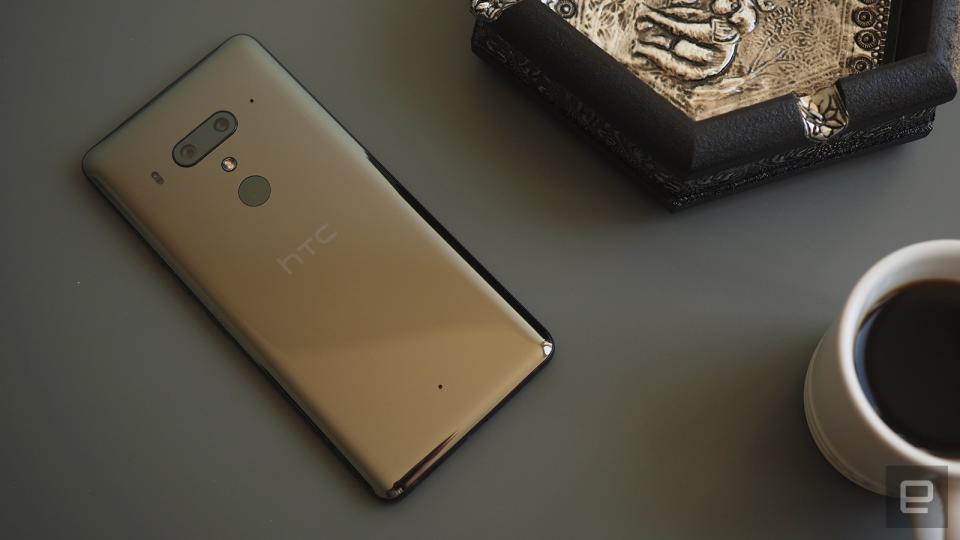
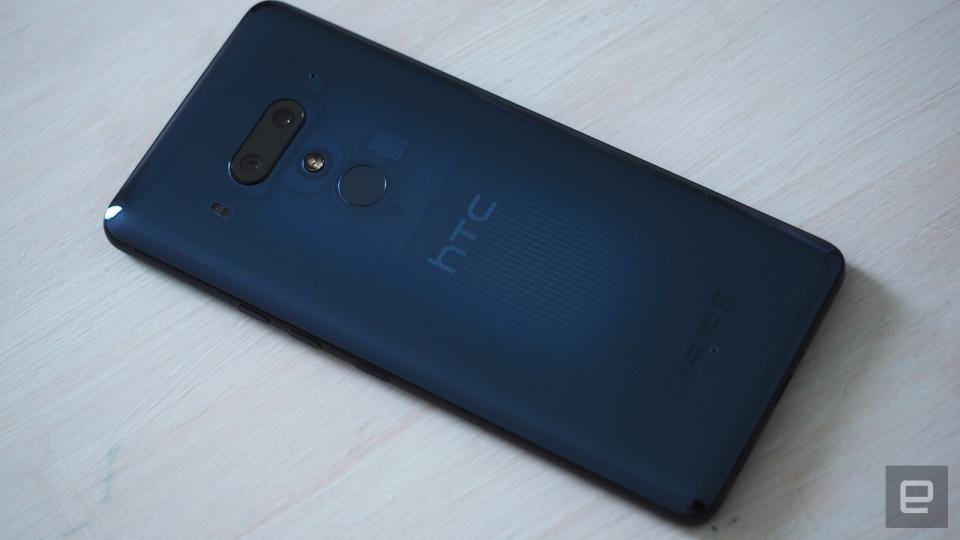
HTC U12+ | |
Processor | Octa-core Snapdragon 845 |
RAM / storage | 6GB / 64GB |
MicroSD card support | Up to 400GB |
Display | 6-inch LCD, HDR 10 |
Display resolution | 2,880 x 1,440 (18:9) |
Rear camera | 12MP wide-angle + 16MP telephoto |
Front-facing camera | 8MP + 8MP |
OS | Android 8.0 Oreo with HTC Sense |
Battery | 3,420mAh |
Charging | USB-C with quick-charging |
Dimensions | 156.6 x 73.9 x 9.7mm (6.2 x 2.9 x 0.4 inches) |
Weight | 188g (6.6 ounces) |
Fingerprint sensor | Yes |
Waterproofing | IP68 |
NFC | Yes |
Headphone jack | No (USB-C only) |
Display and audio
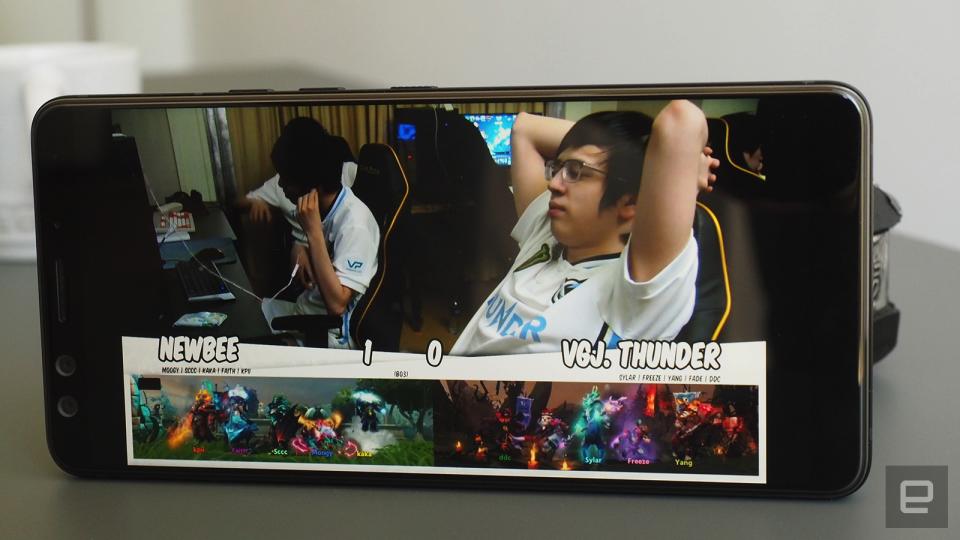
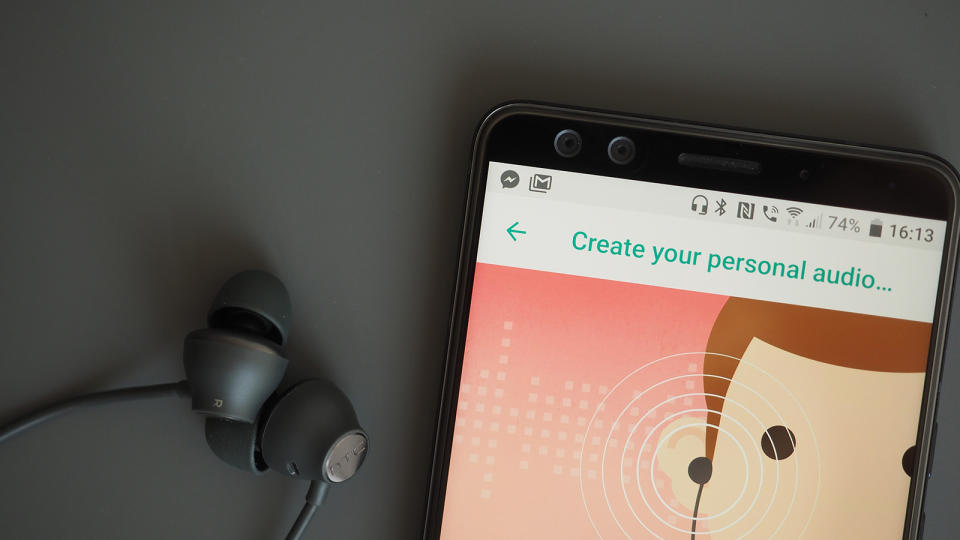
Squeeze me
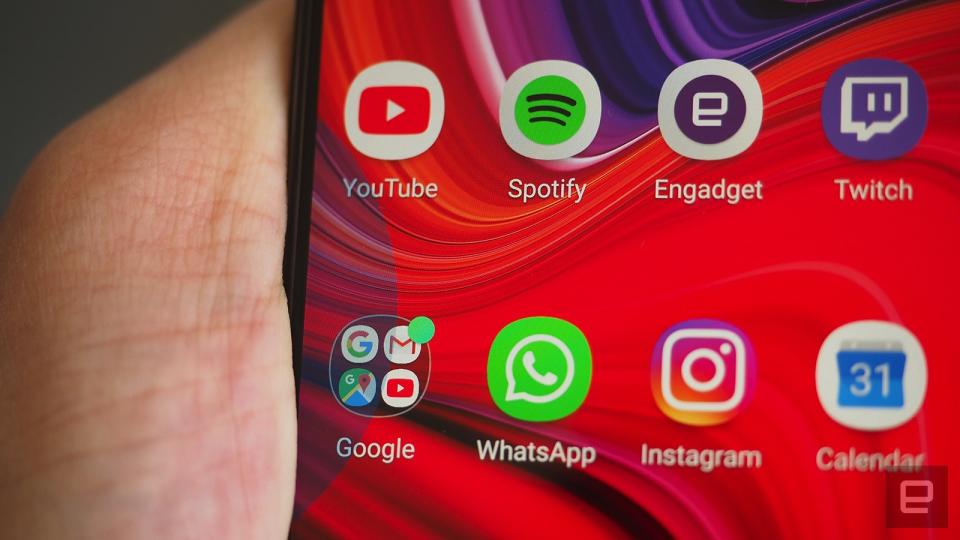
Camera
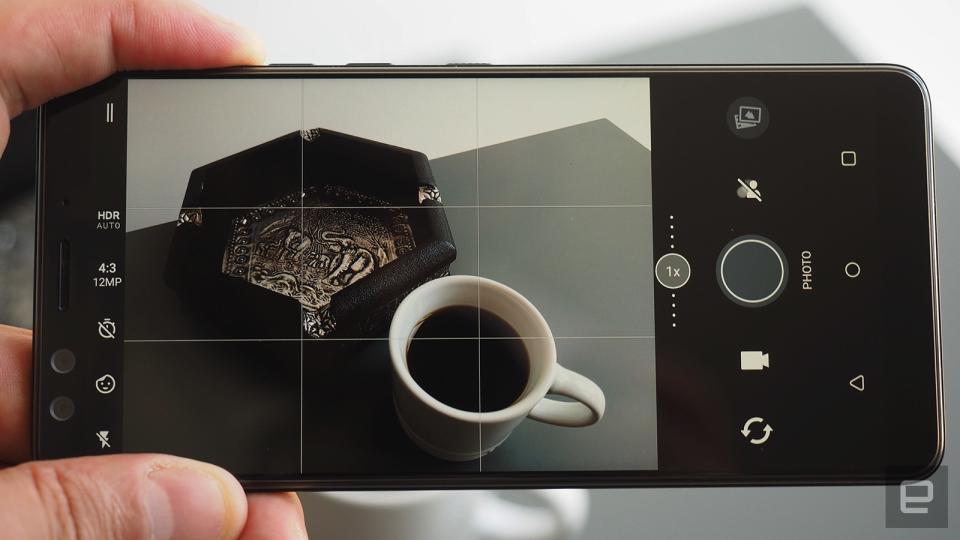

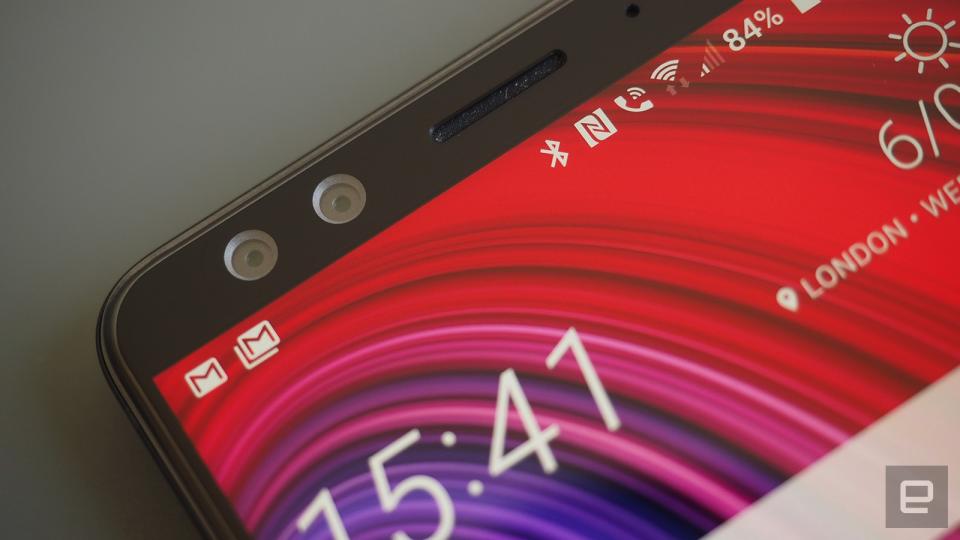
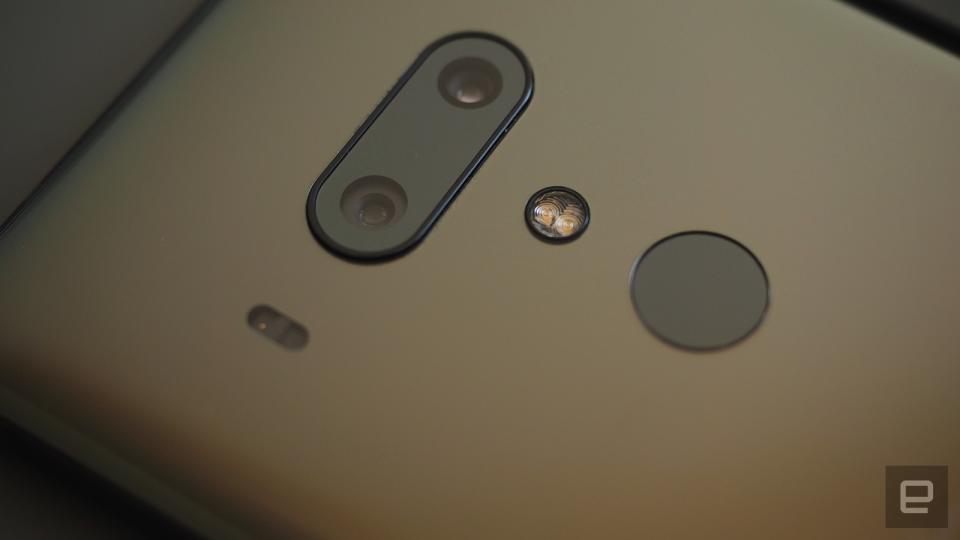
Performance and battery life
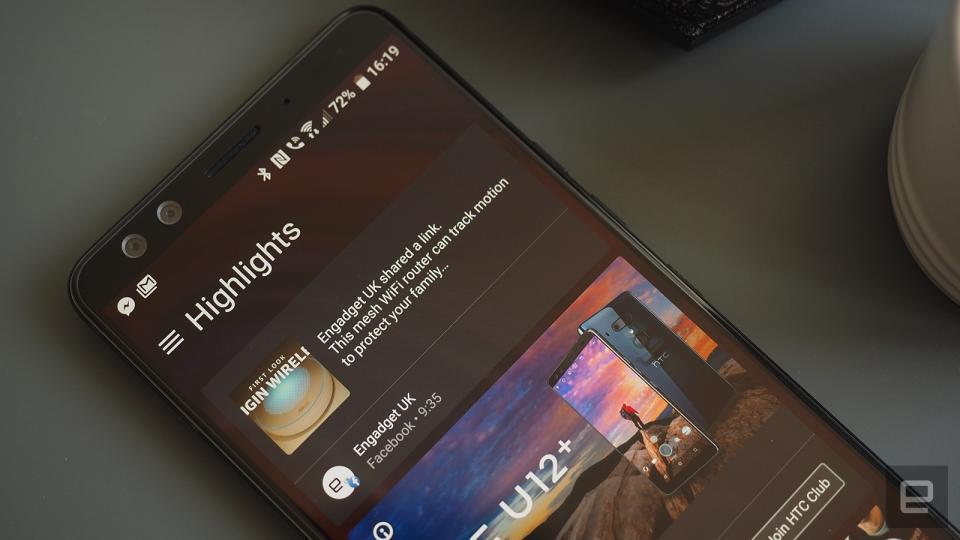
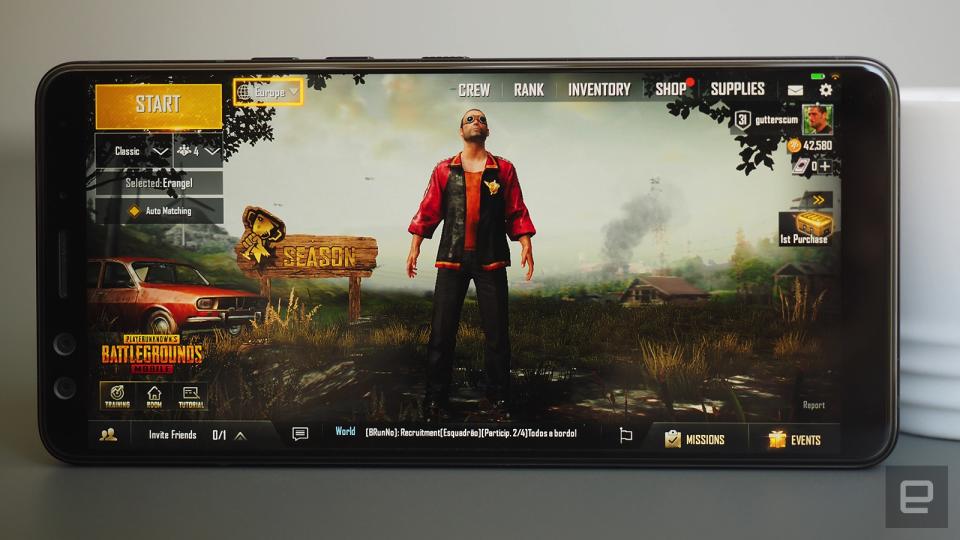
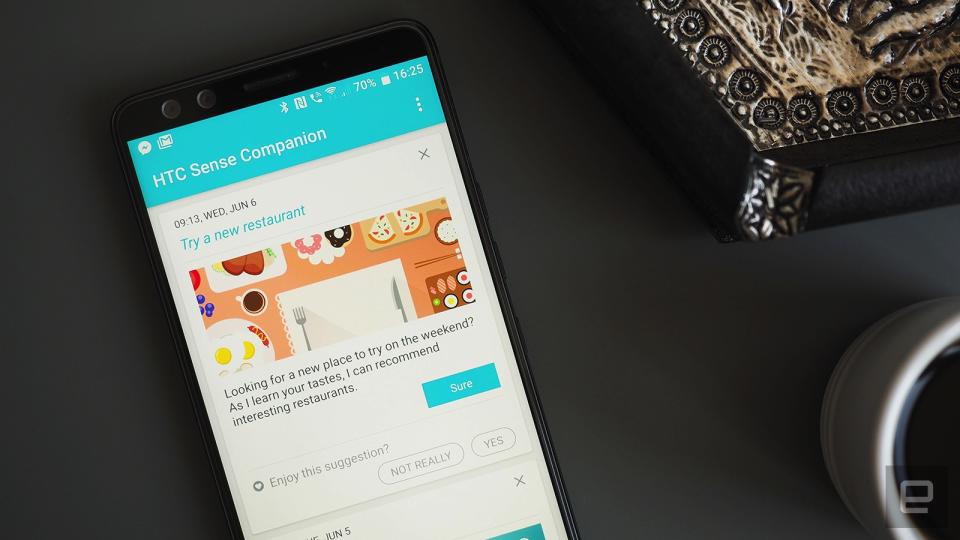
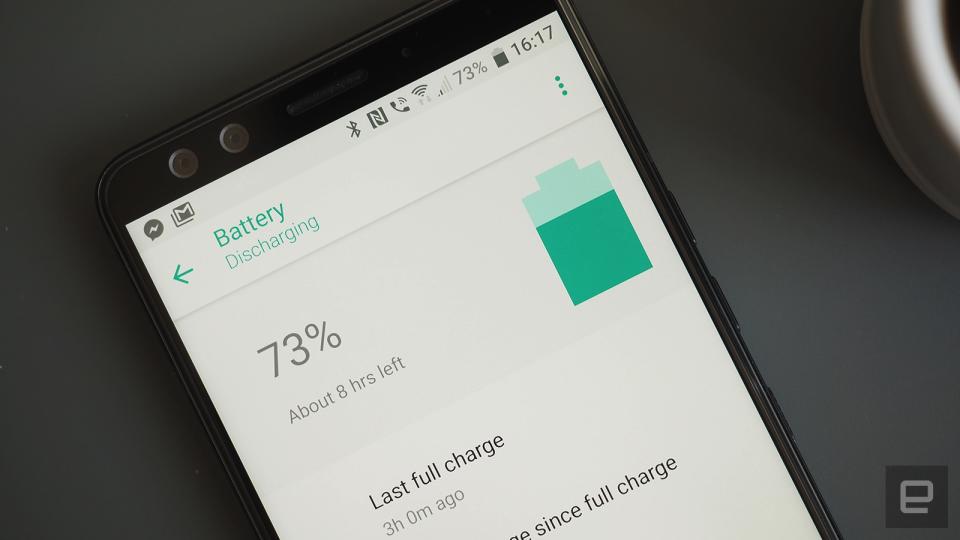
The competition
